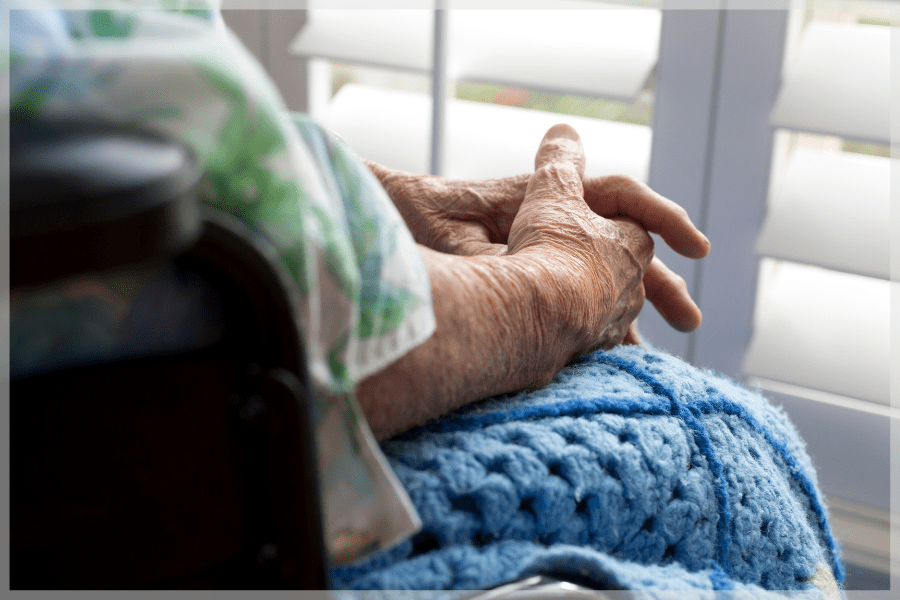
Diabetes is a serious health problem with many lifelong consequences. Unfortunately, it’s also one of the most common chronic health problems among older adults. Becoming more informed about diabetes in elderly adults, practicing preventive measures, and learning how to treat it is the first step to overcoming this public health challenge.
Updated January 9, 2023
Managing Diabetes In Elderly Adults
Diabetes in elderly adults is among the fastest-growing health conditions worldwide. In the US alone, over 37.3 million people have diabetes, of which seniors account for nearly 26.4 million. And unfortunately, the number of those who have it continues to climb. Learning more about this condition, preventive measures, and treatment options are the first steps to overcoming this public health challenge.
Diabetes In Elderly Adults
The body uses sugar to create energy and power us through the day. Insulin, a hormone produced in the pancreas, converts sugar into usable energy. However, with diabetes, the body either doesn’t make enough insulin, misuses it, or both. As a result, people with this disease have problems converting sugar into energy, which causes blood sugar levels (glucose) to rise.
When sugar can’t leave the body, it is stored in the bloodstream, leading to high blood sugar levels and insulin resistance. Insulin from the pancreas enters the bloodstream to absorb the sugar and turn it into energy. This process keeps glucose levels balanced. However, insulin resistance can upset this delicate balance when the body fails to produce or correctly use insulin.
High blood sugar can drastically affect the body, from energy levels to diet, if left untreated. Diabetes in elderly adults can cause numerous health complications, such as:
- Cancer
- Kidney failure
- Vision loss
- Heart disease or stroke
- Alzheimer’s disease
- Hypoglycemia (low blood sugar)
- Peripheral vascular disease (PVD)
In worst-case scenarios, diabetes can result in nerve damage (requiring amputation) or premature death.
Types Of Diabetes
There are two types of diabetes:
Type 1 Diabetes
Type 1 diabetes occurs when the pancreas is unable to produce insulin. This condition can occur in older adults, but it typically develops as a lifelong condition in children and young adults.
Type 2 Diabetes
Type 2 diabetes occurs when the pancreas can’t produce or use insulin effectively. This condition accounts for 90-95% of all diabetes diagnoses, making it the most common type of diabetes. It typically affects middle-aged and older adults but can also occur in children. Risk factors for type 2 diabetes include:
- Family history
- Being overweight
- An inactive lifestyle
- A history of gestational diabetes
While it is the most common form of diabetes in the elderly, it’s also the most avoidable (and manageable) if caught early enough. But since unhealthy blood sugar levels develop throughout one’s life, symptoms can take years to develop and may include:
- Exhaustion
- Blurry vision
- Frequent urination
- Severe hunger or thirst
Unfortunately, in some cases, these symptoms may be mistaken for other age-related issues, prolonging a diagnosis.

Prediabetes
25 million (50%) adults 65 and older are prediabetic – an alarming portion of the population. Prediabetes occurs when glucose levels are elevated but not often enough to be diagnosed as type 2 diabetes. When this condition arises, the body is at the beginning stages of insulin rejection.
Seniors should work closely with their healthcare providers to manage their blood sugar and other risk factors. But even if you become prediabetic, that doesn’t automatically mean you will develop diabetes. However, it’s a reliable indicator that you should make changes to maintain your wellbeing and quality of life. Several preventative measures can help manage blood sugar and return it to normal, safe levels, such as:
- Eating more nutritious foods: Swap sparkling water for soda and carrots for chips. Small changes can make a big difference when trying to reverse prediabetes. Discuss a plan with your doctor or a dietician geared toward your individual needs.
- Getting active: You don’t need an intense daily workout to become healthier. Instead, take long walks throughout the week, do water aerobics, or try indoor exercises for seniors. Physical activity goes a long way in supporting mobility, energy, and independence.
- Losing weight: Eating right and moving around will go a long way toward losing weight. Losing 5-10% of your weight lowers the risk of type 2 diabetes in elderly adults.
Immediate lifestyle changes can reverse prediabetes. However, early detection can be tricky since this condition often displays no signs. If symptoms are already occurring, it may be too late.
Risk Factors For Diabetes In Elderly Adults
25% (or 1 in 4) of adults 65 and older have diabetes, making it one of the most common chronic conditions among seniors. Age-related changes, like insulin resistance and diminished pancreatic functioning, can raise older adults’ risk. However, several other factors can also increase certain peoples’ risk of diabetes.

Unhealthy Diet And Lifestyle
Older adults who consume high amounts of sugar risk developing hyperglycemia, a precursor to type 2 diabetes. Hyperglycemia is a condition that raises blood sugar to dangerously high levels.
Besides being related to sedentary lifestyles and poor nutrition, extra fat adversely affects your health. In particular, fat located around the waist can be detrimental to the body and the organs by causing inflammation. This inflammation worsens insulin resistance, high blood pressure, and high cholesterol.
Ann Albright, director of the CDC’s Division of Diabetes Translation, emphasized that more programs promoting healthy lifestyle choices are needed to eliminate this issue. These should include education about a healthy diet and physical activity. Fortunately, market trends and research from recent years show that older adults are reducing their sugar intake.
Genetic Factors
Some people have a genetic disposition to diabetes, such as those with a family history. In addition, race and ethnicity can also heighten risk. For example, according to the American Diabetes Association, Native Americans are the most susceptible to developing diabetes, followed by African Americans, Hispanics, Asian Americans, and Whites. Researchers believe that a predisposition to insulin resistance, lower socio-economic status, and high levels of obesity all contribute to this trend.
Metabolic Syndrome
Metabolic Syndrome can arise from other causes of diabetes, like excess fat or high blood pressure. However, it’s also associated with high blood pressure, cholesterol, and triglyceride levels. These all contribute to an increased chance of prediabetes or type 2 diabetes.
Sleep Deprivation
Poor sleep hygiene and other sleep disorders are linked to numerous poor health outcomes, including higher blood sugar levels.
Testing For Diabetes In Elderly Adults
Anyone concerned about diabetes in elderly adults should discuss it with their doctor. But usually, practitioners are careful about monitoring blood sugar levels during appointments. They will recommend testing if something is out of the ordinary. Doctors will conduct the same test several times or use various tests to get an accurate diagnosis.
A1C Test
A1C tests are typically conducted throughout the year to monitor blood sugar closely for prediabetes or type 2 diabetes. A1C tests examine your average blood sugar levels in the last three months, which makes it easier to identify patterns and anomalies.
A1C tests don’t require fasting beforehand. Instead, the examination reports blood sugar levels in a percentage after a simple blood draw. The higher the percentage, the higher your glucose levels. A regular rate is under 5.7%, prediabetic is 5.7-6.5%, and diabetic is above 6.5%.
Fasting Plasma Glucose Test
The fasting plasma glucose test checks blood sugar at testing time. Your doctor will typically schedule it. To get the most accurate results, you should fast for a minimum of eight hours beforehand.

Random Plasma Glucose Test
Like the fasting plasma glucose test, the random plasma glucose test checks blood sugar levels in their current state at testing time. However, fasting isn’t necessary for this test.
How To Treat Diabetes In Elderly Adults
Sadly, there is no cure for diabetes in elderly adults. Treatment options vary depending on the type, the individual’s specific needs, blood sugar, and health effects arising from the symptoms. Adjusting lifestyle routines and eating habits are the main ways to manage diabetes in elderly adults; for example:
- Avoid smoking
- Regular dentist appointments
- Yearly flu and pneumonia vaccinations
- Routine cancer screenings based on your risk
- Regular blood pressure and cholesterol checks
- Annual exams for vision, cholesterol, and kidneys
In addition to the tips above, older adults with diabetes should take care of their skin by using softeners for dryness and treating cuts and bruises to prevent them from becoming infected.
They should also inspect their feet daily for red patches, sores, blisters, skin breaks, infections, or excessive calluses. Those who can’t check themselves should ask for help and see a podiatrist if anything seems out of the ordinary.
Besides lifestyle changes, there are prescriptions to manage diabetes in elderly adults, such as:
- Metformin is the most commonly prescribed treatment for high glucose levels, provided the disease hasn’t progressed far enough to cause critical health problems. However, it is most effective with exercise plans and eating right.
- Insulin therapy is done through injections or pumps. Your healthcare provider will help determine the type of insulin you need and how long you need it.
- Medicine that supports kidney and heart health can help make other lifestyle changes, such as physical activity, more comfortable and act as a motivator for weight loss.
MeetCaregivers Can Help Manage Diabetes In Elderly Adults
As we age, our bodies process sugar in the blood less effectively, which can cause problems with insulin resistance. If left untreated, diabetes can have devastating, long-lasting health consequences or even death.
The most effective preventative way to avoid diabetes in elderly adults is eating right and exercising regularly. If you have concerns, talk to your doctor to develop a plan with the necessary changes to protect your health and wellbeing.
A qualified in-home care worker from MeetCaregivers can help you or a loved one with the necessary lifestyle changes to improve their health. Our caregivers can help with meal planning and preparation, transportation to appointments, or even give that extra boost to motivate and get active.
Call 1 (888) 541-1136 or get started and find a caregiver online today.
Check out our Blog for more resources about caregiving and aging in place.
- Centers for Disease Control and Prevention. (2018, March 13). National Diabetes Statistics Report: Estimates of Diabetes and Its Burden in the United States. National Diabetes Statistics Report | Diabetes | CDC. Retrieved January 9, 2023, from https://www.cdc.gov/diabetes/data/statistics-report/index.html?ACSTrackingID=DM72996&ACSTrackingLabel=New+Report+Shares+Latest+Diabetes+Stats+&deliveryName=DM72996 Last updated on June 29, 2022
- Centers for Disease Control and Prevention. (2018, October 3). Division of Diabetes Translation At A Glance. Division of Diabetes Translation At A Glance | CDC. Retrieved October 7, 2019, from https://www.cdc.gov/chronicdisease/resources/publications/aag/diabetes.htm Last updated September 19, 2022
- National Institute on Aging. (n.d.). Diabetes in Older People. Retrieved January 9, 2023, from https://www.nia.nih.gov/health/diabetes-older-people
- Santos-Longhurst, A. (Ed.). (2020, August 14). Type 2 Diabetes Statistics and Facts. Retrieved January 9, 2023, from https://www.healthline.com/health/type-2-diabetes/statistics#8 Medically reviewed by Peggy Pletcher, M.S., R.D., L.D., CDE
- Suchy, F. M. (2022, December). Senior and Diabetes: A Complete Guide. Senior And Diabetes: A Complete Guide – Aging.com. Retrieved October 7, 2019, from https://www.aging.com/seniors-and-diabetes-a-complete-guide/#targetText=So%20yes%2C%20seniors%20are%20at,type%202%20diabetes%20is%20greater
- U.S. Department of Health and Human Services. (2010, October 22). Number of Americans with Diabetes Projected to Double or Triple by 2050. Press Release – Number of Americans with Diabetes Projected to Double or Triple by 2050. Retrieved October 7, 2019, from https://www.cdc.gov/media/pressrel/2010/r101022.html.
- Watts, S. (2022, July 6). What Is Prediabetes? Prediabetes: Causes, Symptoms, Diagnosis and Treatment. Retrieved October 17, 2019, from https://www.endocrineweb.com/conditions/pre-diabetes
- World Health Organization. (2022, September 16). Diabetes. Retrieved October 7, 2019, from http://www.who.int/mediacentre/factsheets/fs312/en/
